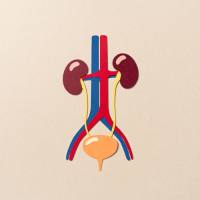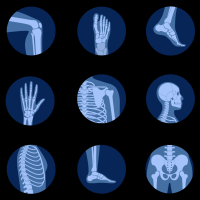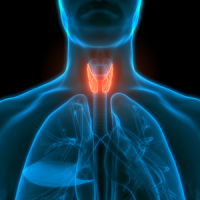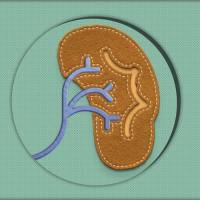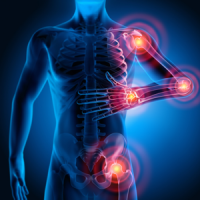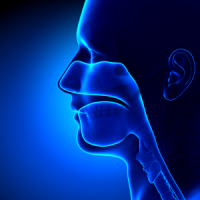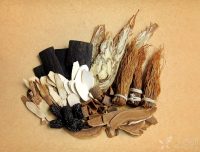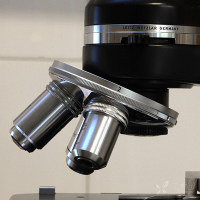AI Review of "我的关于中华传统脊柱的预发论文”
AI Review of "Research on the Existence of Chinese Load-Bearing Bow of Spine – Report on 2 Cases of Standing Full Spine Radiographs of Typical Traditional Chinese Spine and Several Very Interesting Photos Worth Studying"
https://www.academia.edu/ai_review/124658673
References (and Why They Were Included)
• Chen, Huabin (2024). An Anthropological and Mechanical Analysis of the Enigma of the Chinese Load-Bearing Spine: How Does the Frail Elderly Woman Bear a Heavy Burden? (https://doi.org/10.32388/5rmp6c).
- Selected because it investigates the biomechanical and cultural aspects of load-bearing spines, which are highly relevant to the present work’s focus on spine adaptations.
• Plomp, Kimberly (2023). Review of: "An Oriental Physician’s Views and Thoughts on the Global Prevalence of Lumbar Spondylosis…" (doi:10.32388/oeb5y9).
- Included as a comparative example of critical academic commentary on spine-related research, important for understanding how different viewpoints engage with cultural-spinal connections.
• Hassan, Danish (2024). Review of: "An Anthropological and Mechanical Analysis of the Enigma of the Chinese Load-Bearing Spine…" (https://doi.org/10.32388/rohwf5).
- Demonstrates the broader academic reception of investigations into traditional spine structures, helping contextualize the current manuscript’s contribution.
• Zhao, Tengda (2001). “Measurement of Chinese Vertebrae in Skeleton and X-Ray Photograph and Its Clinical Significance.” Chinese Journal of Clinical Anatomy (https://en.cnki.com.cn/Article_en/CJFDTotal-ZLJZ200104004.htm).
- Useful for situating the paper’s radiographic measurements within existing clinical data on Chinese spines.
• Fang, D., et al. (1994). “Computed Tomographic Osteometry of the Asian Lumbar Spine.” Journal of Spinal Disorders (doi:10.1097/00002517-199408000-00004).
- Offers comparative morphometric analyses of lumbar spines in Asian populations, reinforcing the anatomical perspective of the manuscript.
• Chen, Man-Wen, et al. (1994). “Changes in Lumbar Disc Angles of Chinese Subjects from Upright to Flexion.” Spine (doi:10.1097/00007632-199407000-00013).
- Highlights how dynamic changes in lumbar curvature can be assessed radiographically, aligning with the paper’s interest in mobility vs. stability in “traditional Chinese spines.”
• Hukuda, Sinsuke, et al. (2000). “Spinal Degenerative Lesions and Spinal Ligamentous Ossifications in Ancient Chinese Populations of the Yellow River Civilization.” International Journal of Osteoarchaeology (doi:10.1002/(sici)1099-1212(200003/04)10:2<108::aid-oa514>3.0.co;2-5).
- Offers historical and anthropological context on how Chinese spines have adapted and changed over long periods.
• Wang, Teen-Meei, and Chun Kuang Shih (1992). “Morphometric Variations of the Lumbar Vertebrae between Chinese and Indian Adults.” Cells Tissues Organs (doi:10.1159/000147280).
- Provides broader cross-cultural morphological comparisons of lumbar spines, which can inform the structural distinctions described in this paper.
(These references were included to frame the cultural and morphological analysis of the spine and to illustrate how the findings of this manuscript correlate with or diverge from existing research. They also help continue the discussion of anthropological dimensions, mechanical properties, and cross-population variations in spinal characteristics. No references already appearing in the text are repeated here.)
Summary and General Impressions
The manuscript explores two case reports and several photographic examples to support the concept of a “Chinese load-bearing bow of spine.” The author contends that individuals raised in rural or traditional environments, where carrying heavy loads on the shoulder is common, exhibit distinct spinal curvatures and stability characteristics compared to those who adhere to more “Westernized” lifestyles or sports practices. This distinction centers on the notion that traditional shoulder-carrying culture once cultivated a spine with robust load-bearing capacity and relative resilience to lumbar spondylosis.
The paper’s principal strengths lie in:
- Unique Cultural Perspective: By emphasizing traditional Chinese labor practices, the manuscript offers an anthropologically oriented look at spinal adaptation.
- Visual Evidence: The inclusion of radiographic images and photos helps illustrate the differences in curvature and posture.
- Personal and Observational Insights: The author’s firsthand experience—both as a physician and as someone who resumed shoulder-carrying exercises—adds depth to the narrative.
Methodology and Data Presentation
Observations are drawn from two case studies, supplemented by longitudinal follow-ups and qualitative assessments (physical exams, load-bearing capacity, and lifestyle backgrounds). While the personal observations are valuable, the methodology would benefit from greater detail on:
• How participants were selected, beyond their identifying characteristic of “traditional Chinese spine.”
• Quantitative measurements of curvature, muscle strength, and flexibility.
• A clear, replicable framework for “traditional spine” classification versus “Western spine,” possibly including physical examination protocols or standardized measurement criteria.
Interpretation of Findings
The manuscript interprets decreased spinal mobility as beneficial because it correlates with higher stability and fewer lumbar pathologies. This perspective suggests that “reversed bending spine” or “Western spine” might have advantages in mobility but also greater vulnerability to degenerative conditions. The discussion would be enhanced by:
• Comparative data from other populations (e.g., more systematic sampling of spines from varied lifestyles).
• Clarification on whether anthropometric variability or genetic predisposition might also play roles in spinal curvature differences.
• Consideration of potential confounding factors, such as diet, overall fitness, and injury history.
Strengths and Potential Directions
• Anthropological Value: The work proposes to preserve an allegedly vanishing cultural-spinal feature. Future studies with larger sample sizes and broader demographic data would lend credence to the notion of a sustaining “Chinese load-bearing bow.”
• Impetus for Cross-Disciplinary Research: Clinicians, anthropologists, and biomechanical engineers might collaborate to confirm and quantify the proposed spinal alignment differences.
• Preventive and Rehabilitative Potential: The premise that certain load-bearing exercises might help prevent or alleviate lumbar spondylosis is clinically relevant and worth further rigorous testing.
Clarity and Organization
Overall, the presentation includes vivid images, anecdotal accounts, and personal narratives that convey the concept effectively. To improve clarity, the paper could:
• Present the central hypothesis (“Chinese load-bearing bow of spine”) earlier and more systematically.
• Move from anecdotal evidence to structured data where possible, placing photographs in a well-labeled, consistent format.
• Streamline and ensure each section has a defined purpose (e.g., Method, Discussion, Conclusion) to allow readers to follow the logic flow more transparently.
Conclusion
This paper provides an intriguing cultural and anthropological lens on spinal curvature and function. The author’s direct engagement with the subject—both narratively and personally—underscores the significance of traditional practices. While the observations are compelling, additional rigorous, quantitative data from a broader cohort would strengthen the argument further. The article opens a path for interdisciplinary discussions about how cultural practices and daily activities shape musculoskeletal structures and potentially influence the risk of spine-related disorders.
No recommendation about publication status is provided here. Instead, this review highlights the paper’s merits and suggests avenues for further refinement and research.





